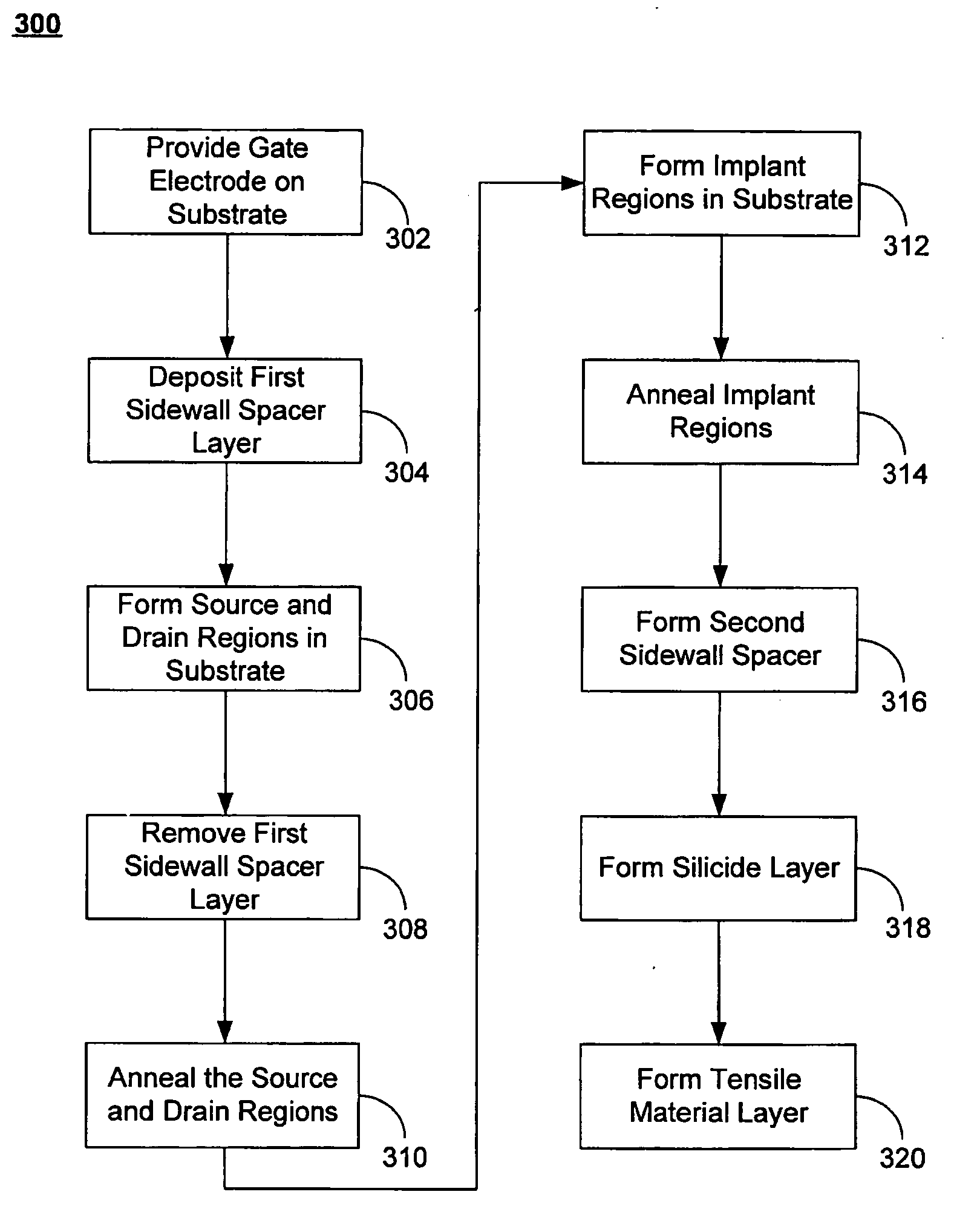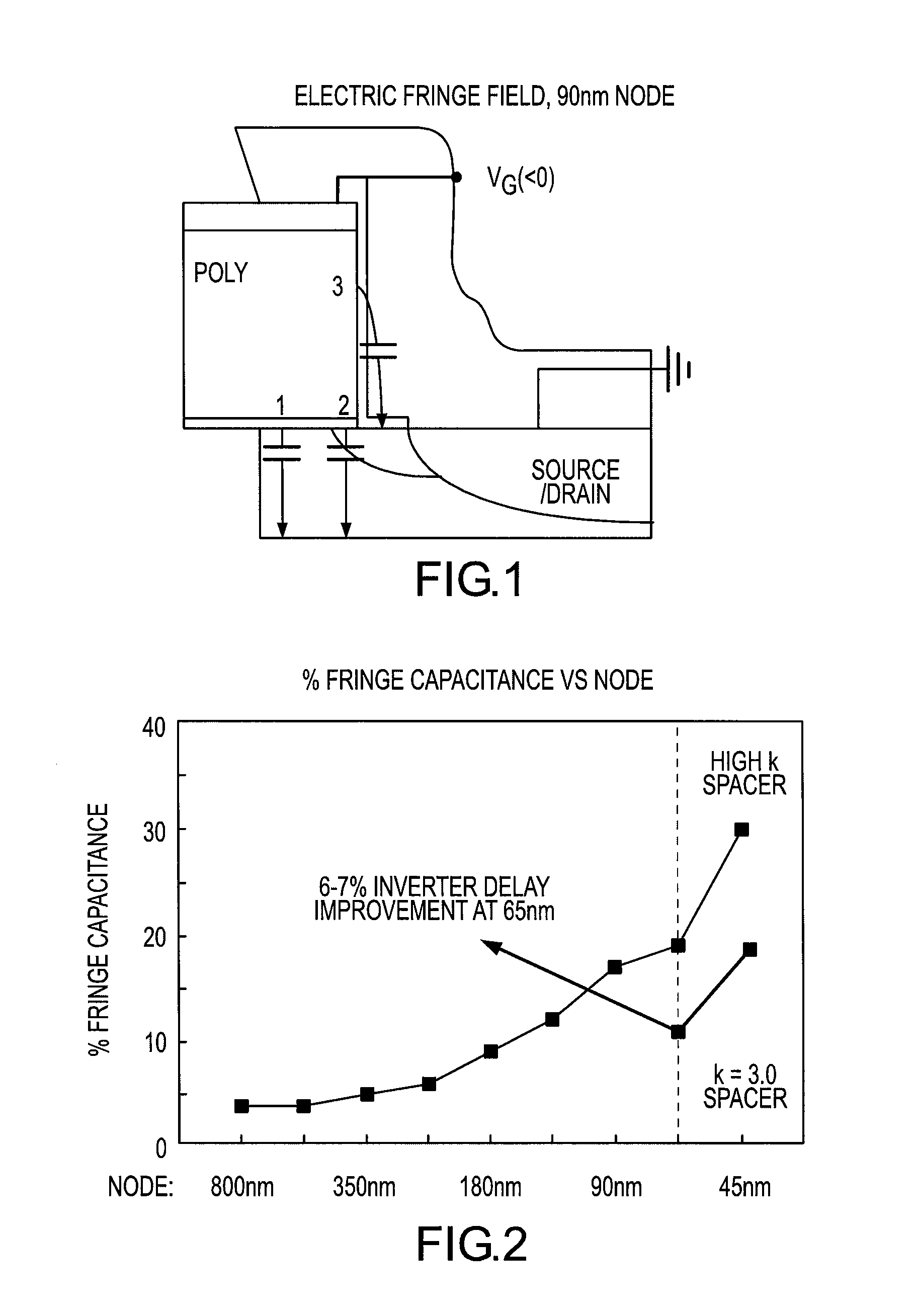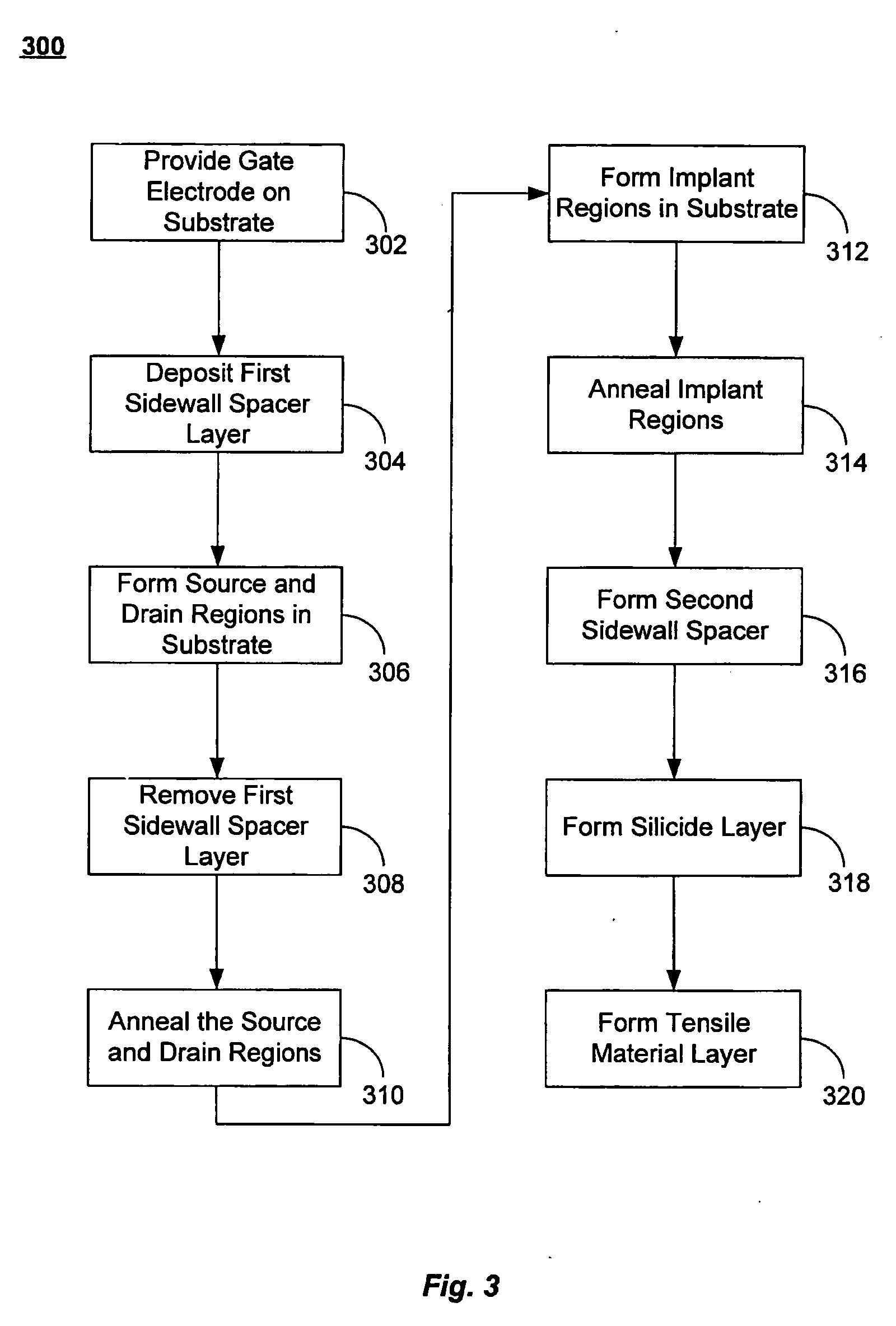Low-k spacer integration into CMOS transistors
a low-k spacer and transistor technology, applied in the field of low-k spacer integration into cmos transistors, can solve the problems of increasing the difficulty of making even smaller, and increasing the impediment of parasitic capacitance to good electrical performance, and carbon-silicon-oxide films tend to become much more conductiv
- Summary
- Abstract
- Description
- Claims
- Application Information
AI Technical Summary
Benefits of technology
Problems solved by technology
Method used
Image
Examples
Embodiment Construction
Overview
[0022] Systems and methods are described for forming conformal sidewall spacers that reduce the amount of fringe capacitance between the gate electrode and source / drain regions compared to conventional sidewall spacers with higher dielectric constants (i.e., k values). The methods include methods of forming low-k, carbon and silicon containing sidewall spacers after the formation and removal of a sacrificial spacer during the formation and high-temperature anneals (e.g., greater than 1000° C.) of the source / drain and other dopant regions, like halo regions, dopant extension regions, etc. The sacrificial spacer avoid the problem of the low-k spacer materials becoming conductive at high temperatures.
[0023] Also described are method of forming low-k spacers with improved conformality. Depositions of silicon and carbon containing spacer films often have reduced conformality when formed with conventional spacer deposition techniques (e.g., plasma deposition techniques for depo...
PUM
 Login to View More
Login to View More Abstract
Description
Claims
Application Information
 Login to View More
Login to View More - R&D
- Intellectual Property
- Life Sciences
- Materials
- Tech Scout
- Unparalleled Data Quality
- Higher Quality Content
- 60% Fewer Hallucinations
Browse by: Latest US Patents, China's latest patents, Technical Efficacy Thesaurus, Application Domain, Technology Topic, Popular Technical Reports.
© 2025 PatSnap. All rights reserved.Legal|Privacy policy|Modern Slavery Act Transparency Statement|Sitemap|About US| Contact US: help@patsnap.com



